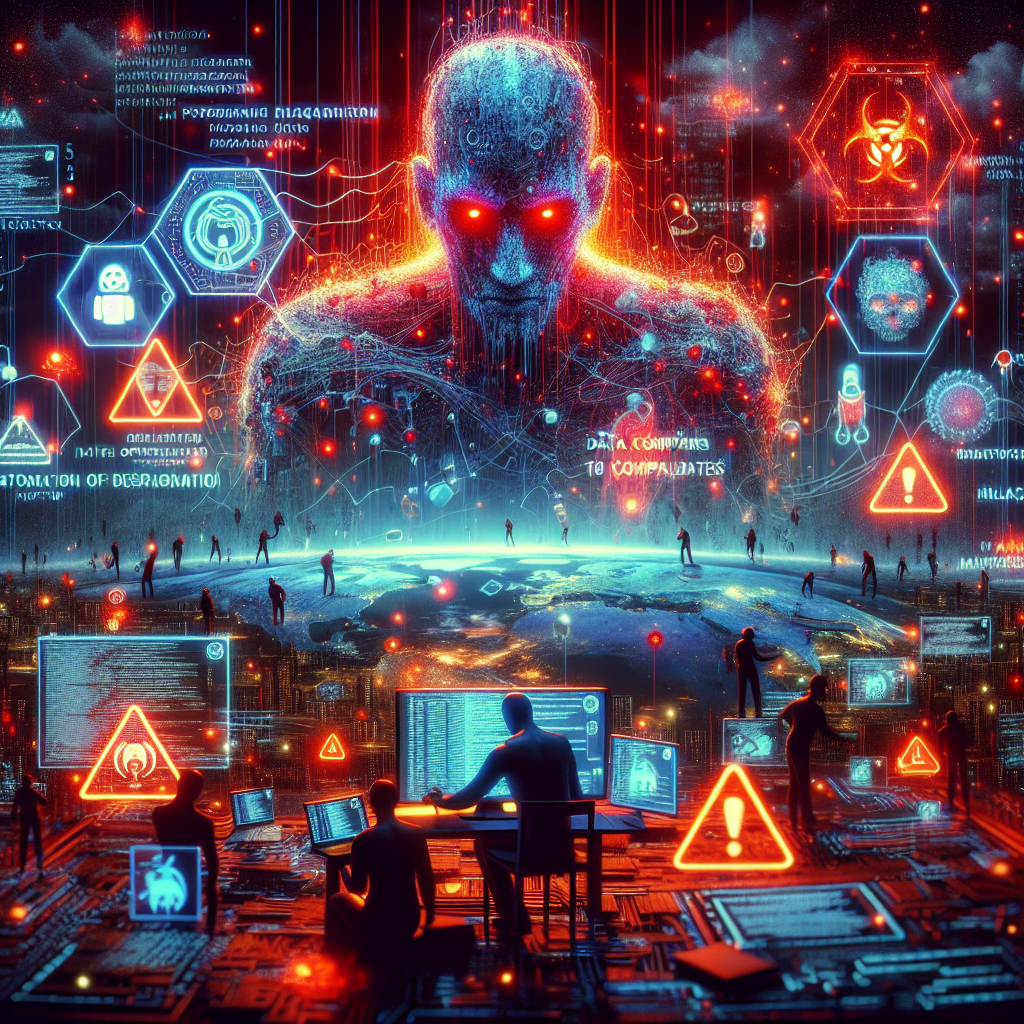The Rapid Evolution of AI-Powered Cyber Threats
The cybersecurity landscape is undergoing unprecedented changes in 2025, with AI-driven threats becoming more sophisticated and harder to detect. Malicious actors are leveraging artificial intelligence to automate cyber-attacks, evade security measures, and exploit vulnerabilities at an alarming rate.
As enterprises and governments accelerate their digital transformation, cybercriminals are using AI to refine their tactics, making traditional security measures inadequate. Organizations must now contend with AI-powered malware, automated phishing campaigns, and deepfake attacks that can bypass conventional defenses with staggering efficiency.
How AI is Fueling Cybercrime in 2025
AI has become a double-edged sword in cybersecurity. While businesses use AI for defense, threat actors are simultaneously harnessing its power to enhance their attacks. Here’s how AI is changing the cyber threat landscape:
1. AI-Generated Phishing Attacks
Cybercriminals are increasingly using AI to craft highly personalized phishing emails, text messages, and even audio deepfakes. These attacks are designed to trick victims into revealing sensitive data, such as login credentials and financial information.
- AI-powered phishing campaigns can generate thousands of convincing messages tailored to specific targets.
- Deepfake voice technology enables attackers to impersonate executives and carry out social engineering attacks.
- Machine learning helps cybercriminals refine their phishing tactics based on previous successful attempts.
2. AI-Augmented Ransomware
Ransomware remains one of the most destructive cyber threats, but in 2025, AI is making it even more dangerous. Threat actors are using AI to automate network infiltration, encrypt critical data, and bypass traditional endpoint security.
- AI-driven ransomware can analyze security systems in real time to identify weaknesses.
- Automated data exfiltration ensures that attackers gain valuable information before triggering the ransom demand.
- Cybercriminals use AI to negotiate ransom payments, making them more effective at extorting victims.
3. Autonomous Malware
In 2025, malware is evolving beyond pre-programmed behaviors. AI-powered malware can adapt its behavior dynamically to evade detection and maximize damage.
- Malware can mimic legitimate software processes to stay undetected.
- Self-learning malware adjusts its attack strategies based on the cybersecurity tools it encounters.
- AI-driven threats constantly evolve, making pre-existing security signatures ineffective.
4. Deepfake Attacks and Disinformation Campaigns
The rise of deepfake technology is fueling cyber threats on multiple fronts. AI-generated multimedia is being used for identity fraud, corporate espionage, and disinformation campaigns.
- Deepfake videos and voice recordings can trick employees into authorizing fraudulent transactions.
- Political and corporate entities face reputational risks due to AI-generated fake content.
- Social engineering attacks using deepfakes make traditional verification methods unreliable.
Growing Quantum Computing Risks
Although AI-powered cyber threats dominate the current landscape, the emergence of quantum computing introduces an entirely new set of risks. Quantum computers have the potential to break encryption protocols that underpin modern cybersecurity measures.
How Quantum Computing Threatens Cybersecurity
Quantum computing can solve complex mathematical problems exponentially faster than classical computers, posing a threat to current cryptographic standards.
- Traditional encryption, such as RSA and ECC, could become obsolete with quantum breakthroughs.
- Cybercriminals may store encrypted data now to decrypt it later using quantum technology.
- Governments and enterprises must prepare for “Q-Day,” the moment quantum computers can break existing encryption.
Preparing for the Quantum Threat
To counter the risk posed by quantum computing, organizations must prioritize post-quantum cryptography (PQC).
- Adopting quantum-resistant encryption methods before quantum computing reaches full potential.
- Transitioning to hybrid encryption models that integrate both classical and quantum-safe solutions.
- Investing in quantum cybersecurity research to stay ahead of evolving threats.
Cybersecurity Strategies to Combat AI-Powered Threats
As cyber threats continue evolving, organizations and governments must adopt proactive security measures. Here are key strategies to combat AI-driven cyber threats:
1. Leveraging AI for Cyber Defense
Just as attackers use AI for malicious purposes, cybersecurity professionals must integrate AI into their defense strategies.
- AI-powered threat detection systems identify and neutralize cyber risks in real time.
- Machine learning helps security analysts predict and respond to emerging threats.
- Automated security protocols reduce human error and strengthen defenses.
2. Enhancing Employee Awareness
Human error remains a leading cause of cyber incidents, making cybersecurity awareness training essential.
- Regular phishing simulation exercises to educate employees.
- Multi-factor authentication (MFA) to mitigate credential-based breaches.
- Encouraging a security-first culture within organizations.
3. Implementing Zero Trust Architecture
A zero-trust approach ensures that no user or device is automatically trusted within a network.
- Continuous authentication and identity verification.
- Micro-segmentation to limit lateral movement in case of breach.
- Strict access control based on the principle of least privilege.
4. Strengthening Incident Response Plans
Having a robust incident response plan is crucial for minimizing damage caused by AI-driven cyberattacks.
- Regular cybersecurity drills to test response effectiveness.
- Automated response protocols for rapid threat mitigation.
- Collaboration with cybersecurity experts and government agencies.
The Future of Cybersecurity in an AI-Driven World
The rise of AI-driven cyber threats and quantum computing risks presents a pressing challenge for global cybersecurity. Organizations must adopt innovative security frameworks, leverage AI for defense, and prepare for a future where quantum computing reshapes encryption standards.
Cybersecurity is no longer a reactive discipline—it must be predictive, adaptive, and proactive. As 2025 unfolds, only those who embrace cutting-edge security measures will remain resilient against the rapidly evolving cyber threat landscape.
The time to act is now. Preparing for AI-driven and quantum-powered cyber threats is no longer optional—it’s a necessity.




